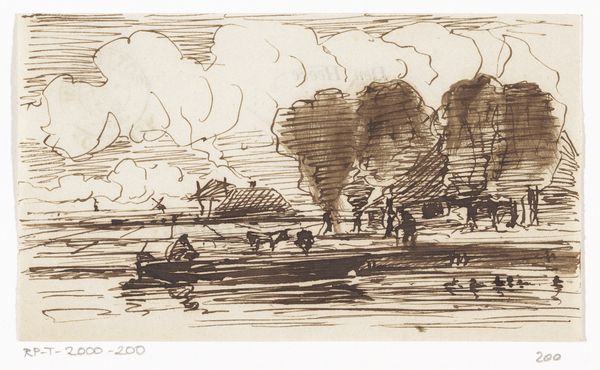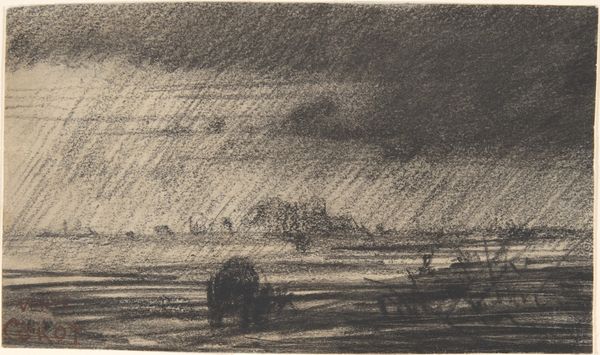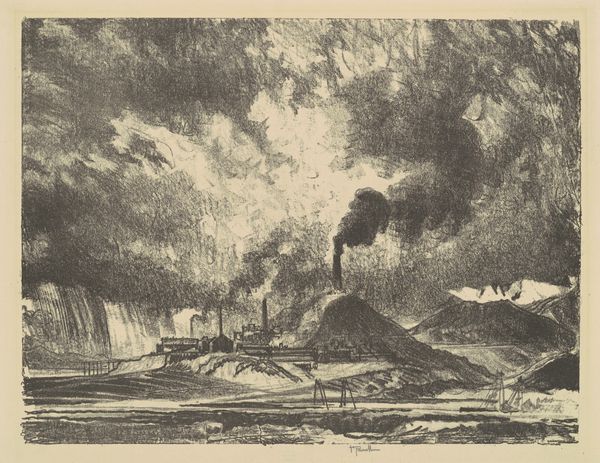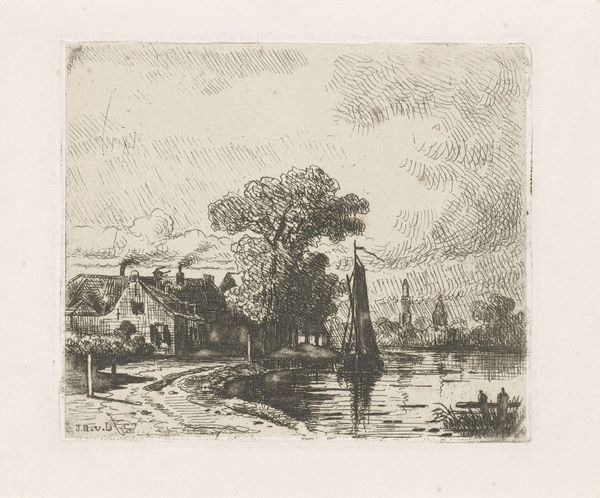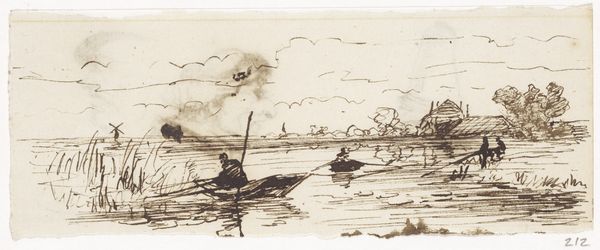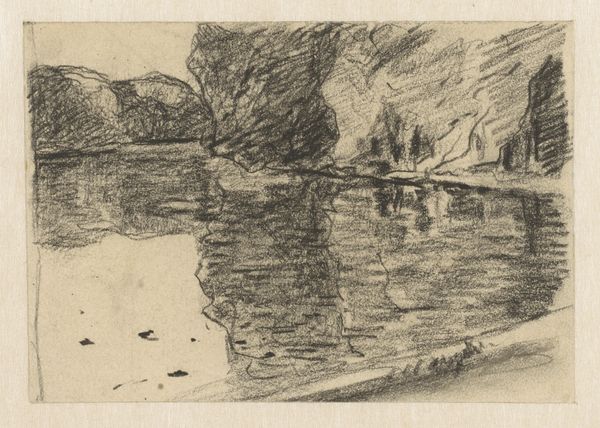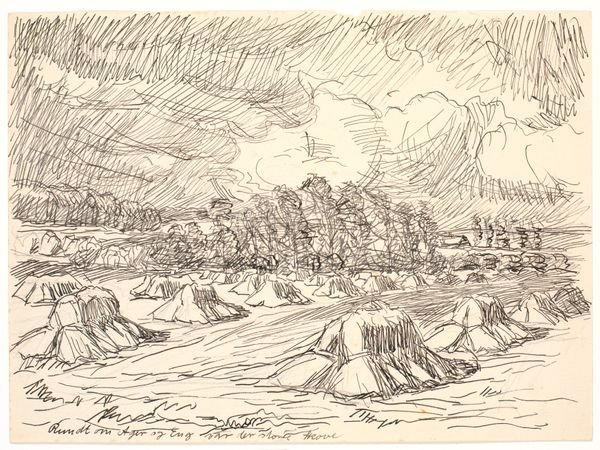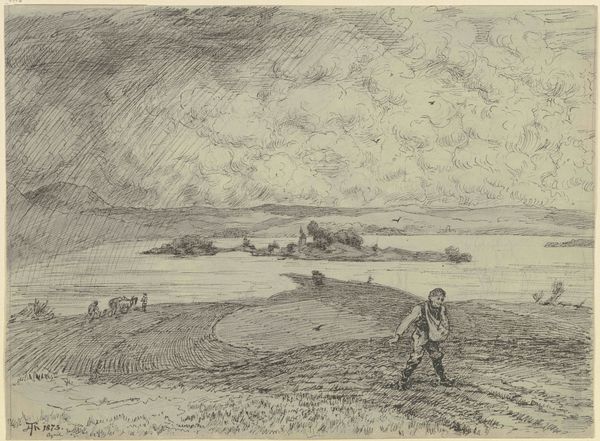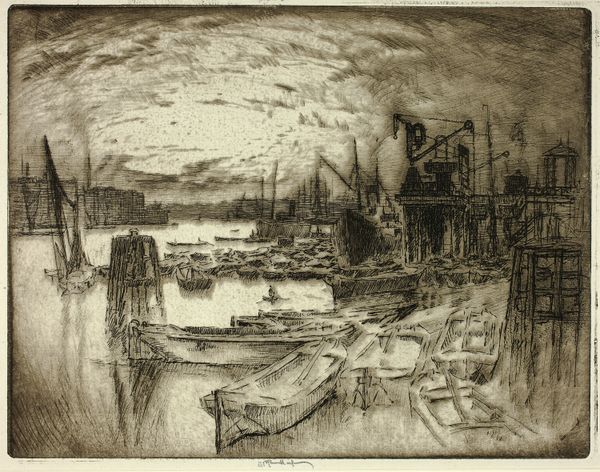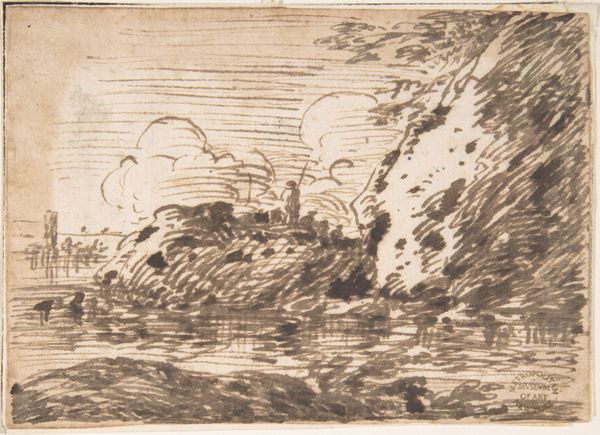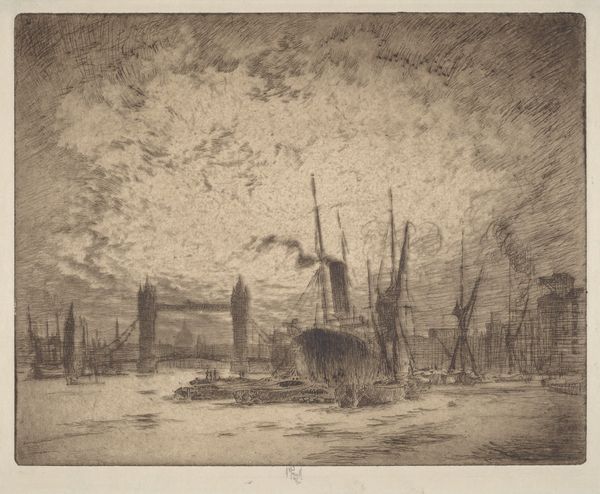
Copyright: National Gallery of Art: CC0 1.0
This lithograph, "The Flooded Seine in 1910," was made by Paul Signac around the time of the depicted flood. Signac’s choice of lithography, a printmaking technique using a flat stone or metal plate, is significant. Unlike painting, lithography allows for the easy creation of multiples, making art more accessible to a wider audience. The grainy texture of the print, achieved through the manipulation of the lithographic crayon on the stone, creates a somber, almost apocalyptic mood. The dark tones and rough lines emphasize the chaos and disruption caused by the flood. The subject matter itself - the flooded Seine - speaks to the uneasy relationship between industrial progress and nature. The steamboats, usually symbols of commerce and modernity, are now stranded, victims of the natural disaster. This reminds us that materials, making, and context are vital to understanding an artwork's full meaning, challenging traditional distinctions between fine art and craft.
Comments
No comments
Be the first to comment and join the conversation on the ultimate creative platform.
